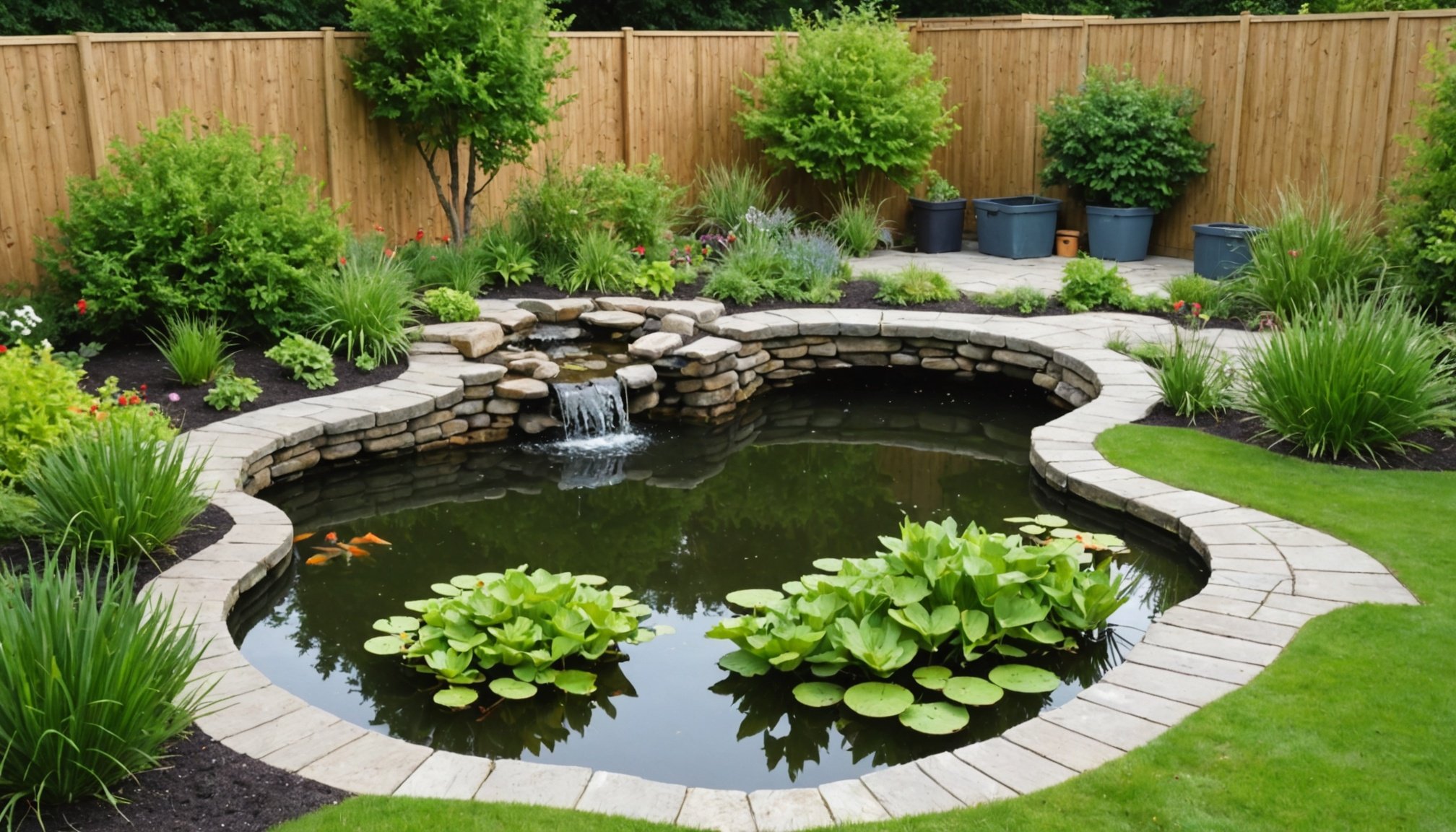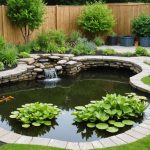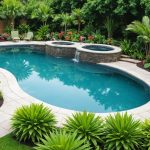Understanding Climate Conditions for Pond Installation
In the UK, diverse climate conditions across regions play a significant role in pond installation and maintenance. From the milder weather in the south to the cooler temperatures of the north, each area necessitates tailored approaches for effective pond ecosystems.
Seasonal temperature variations, such as the warm, humid summers and colder winters, determine suitable periods for pond construction. For instance, early spring or late autumn, with moderate temperatures and stable conditions, are ideal for starting a pond project. The soil during these times is easier to work with, and aquatic plants have the opportunity to establish before extreme summer or winter stresses. Additionally, selecting materials that withstand temperature fluctuations is critical for a durable installation.
A lire aussi : Essential Factors to Weigh When Installing Underfloor Heating in Your UK Home
The UK’s variable climate also requires understanding rainfall patterns. High precipitation rates may lead to waterlogging, necessitating robust drainage solutions to prevent pond overflow, while regions with less rainfall might require additional water supply strategies. Considering these factors ensures the structural integrity of the pond and the safety of aquatic life throughout the year.
Understanding precise UK gardening conditions helps ensure a functional and aesthetically pleasing pond. By acknowledging how the UK’s climate shapes pond ecosystems, enthusiasts can make informed decisions, adapting to and even embracing weather variations for a thriving garden feature.
A lire également : Top Strategies to Tackle Condensation in Your Cornish Coastal Home
Identifying Suitable Locations
When planning pond placement in your garden, several critical factors need consideration to ensure optimal health and easy maintenance. A primary concern is sunlight exposure. Ponds ideally need at least six hours of sunlight per day to maintain a healthy ecosystem, but too much sunlight can lead to excessive algae growth. Therefore, balancing is key.
Wind direction is another vital aspect. Positioned correctly, wind can help aerate the pond, promoting water circulation which is beneficial for plant and fish health. Conversely, a bad direction may blow debris into the pond, increasing maintenance work.
Drainage must also be considered. Ensuring that water runoff from your garden does not enter the pond is essential, as it can carry pollutants and cause water level fluctuations.
Assessing existing garden layout is crucial in this decision-making. Consider the proximity of trees and large structures. Trees may provide shade, but falling leaves can be detrimental to the pond’s water quality. Large structures could block necessary sunlight or create unwanted wind tunnels.
By evaluating these factors, you can strategically position your pond to complement your garden’s existing features while optimizing its health and functionality.
Pond Size and Depth Considerations
When planning a pond, pond dimensions and water depth are critical factors that shape its success. Determining the ideal size and depth involves understanding the balance between aesthetic appeal and practicality. An expansive pond may add grandeur to a garden, but a smaller, well-maintained pond can be equally charming and more manageable.
Guidelines for determining pond dimensions suggest that the width and length should correspond with available space and intended use. For example, a simple reflective pond might require less area, while a pond supporting vibrant aquatic ecosystems demands more space. Consideration of pond dimensions is crucial for sustaining aquatic life and ensuring overall harmony with the garden’s layout.
The water depth considerably impacts the health of both fish and plants within the ecosystem. Deeper ponds, often a minimum of 60 cm, are favourable for fish like koi, providing cooler environments and protecting them from predators. Additionally, deeper water prevents the freezing of the entire pond during harsh UK winters, safeguarding aquatic ecosystems.
Balancing these considerations ensures the pond not only enhances garden beauty but also functions optimally. Prioritizing practicality alongside aesthetics leads to a pond that thrives and delights all year round, creating a harmonious blend of nature and design.
Seasonal Considerations for Installation
When it comes to the installation timing of a garden pond in the UK, understanding the influence of the seasons is pivotal. Weather considerations play a crucial role, and installing your pond during the correct season can minimise potential challenges.
The best time of year for pond installation in the UK is typically spring or early autumn. These periods offer mild weather, allowing for easier ground excavation and decreased likelihood of extreme weather conditions. Spring, in particular, provides an optimal environment for plants to establish and grow, ensuring a thriving ecosystem from the start.
However, different seasons do come with their share of challenges. During winter, frost haunts the ground, making excavation burdensome and potentially damaging to pond liners. Heavy rain in summer can lead to soggy conditions, disrupting the installation process and causing delays.
Beyond installation, seasonal changes require adjustments in pond maintenance. With the arrival of winter, for instance, special attention should be given to installing de-icers or keeping an area of the pond ice-free for aquatic life. As seasons shift, so too do the growth patterns of aquatic plants, necessitating regular pruning and care.
Preparing diligently for these seasonal shifts not only ensures a smoother installation process but also results in a lasting and flourishing garden pond.
Maintenance Tips for a Healthy Pond
Regular pond maintenance is crucial for sustaining a thriving aquatic environment. Understanding the balance between the ecosystem and water quality is key to a vibrant pond. Routine maintenance ensures your garden pond remains healthy for all inhabitants.
1. Routine Maintenance Tasks:
Maintaining a pond involves several routine tasks such as removing debris, checking filters, and managing plants. Regularly skimming the surface for leaves can prevent them from decomposing and affecting water quality. Clean filters and pumps allow for proper water circulation, which is vital for maintaining the ecosystem balance.
2. Importance of Water Quality:
Monitoring water quality is essential to support aquatic life. Checking pH levels, ammonia, nitrite, and nitrate concentrations can reveal a lot about your pond’s health. These factors affect fish and plant life, and regular testing can prevent problems before they escalate.
3. Seasonal Adjustments:
Pond maintenance should adapt to seasonal changes, especially in UK climates. In spring, focus on planting and cleaning, while summer demands increased aeration due to higher temperatures. Autumn calls for leaf nets and plant pruning, and in winter, ensure some ice-free space for gas exchange.
Implementing these practices will help maintain the ecosystem balance, leading to a robust and visually appealing pond all year round.
Installation Steps and Materials
Embarking on a DIY pond installation starts with a well-structured plan. Begin by selecting a suitable location, ensuring it’s not directly under trees to avoid debris buildup. With the site chosen, mark the outline of your future pond and begin excavation, shaping shelves for plants at varying depths.
Once the hole is dug, it’s time for materials selection. In the UK, consider a durable pond liner made from EPDM rubber, as it withstands temperature fluctuations and UV exposure. Lay the liner over a protective underlay to prevent punctures from sharp stones or roots.
For the heart of your pond, a reliable pump is essential to maintain water circulation, promoting oxygenation crucial for both plants and fish. Opting for an energy-efficient model will help keep ongoing costs low. Complement the pump with a suitable filtration system; this step ensures crystal-clear water and reduces necessary maintenance.
Enhance your pond by integrating native plants that thrive in local climates and support wildlife-friendly features. From oxygenators like hornwort to surface cover provided by water lilies, these choices create a harmonious ecosystem attracting beneficial wildlife such as dragonflies and frogs. By considering these steps in pond construction, you’ll cultivate a thriving, sustainable water garden that becomes a tranquil haven right in your backyard.
Local Regulations and Zoning Laws
Understanding UK gardening laws is essential when planning a pond installation. Local council guidelines are pivotal; they govern pivotal aspects of pond creation and ensure compliance with regional standards. Here’s the nitty-gritty: you’ll often need to secure necessary permits and documentation before proceeding.
Local councils generally require a review of your pond regulations. This involves checking whether the proposed pond will adhere to safety, environmental, and aesthetic standards that the council might have in place. Notably, certain areas might have special requirements or restrictions based on ecological sensitivity.
For those diving into installation, it’s wise to confirm with your local authorities what specific permits are needed. Often, they detail the scale of pond construction permissible under local council guidelines. Variability exists across councils, so understanding the stipulations ahead of time can save future headaches.
Moreover, understanding zoning laws is crucial. These laws affect where a pond can be placed within your property. Some areas might restrict pond placement due to nearby infrastructure, property lines, or natural habitat protections. Compliance ensures harmony with neighbours and the environment, particularly regarding water usage and wildlife conservation.
In short, always consult your local council and thoroughly understand UK gardening laws to ensure a seamless pond installation experience.
Addressing Challenges Unique to the UK Environment
Navigating the complexities of maintaining a garden pond in the UK can seem daunting. However, understanding specific environmental challenges and their solutions can transform your pond into a thriving ecosystem. One critical issue is the prevalence of invasive species such as signal crayfish and New Zealand pygmyweed. These species can disrupt pond ecosystems, outcompeting native wildlife and altering water quality.
To combat invasive species, regular monitoring and quick removal are crucial. Implementing barriers like nets or fencing can deter intruders. You can also enhance pond protection by mimicking natural pond conditions, which often resist invasions.
Harsh weather conditions present another significant challenge. Frost and temperature fluctuations can stress your pond’s biodiversity. Installing pond heaters or floating styrofoam sheets are effective strategies to mitigate temperature extremes.
Pollution from urban runoff is another threat. Adding marginal plants can act as natural filters, trapping sediments and absorbing excess nutrients, keeping your pond’s water clear.
Balancing the pond’s ecosystem encourages UK wildlife. Incorporating native aquatic plants and creating varied habitat structures like logs and stones invite frogs, dragonflies, and birds to your pond. When done thoughtfully, your garden can entice local wildlife while maintaining a balanced ecosystem, contributing to its natural charm and vitality.
I’m sorry, without the Section Outline or additional context, I’m unable to complete this task effectively. Could you please provide more details or specific instructions related to the section you need written?











